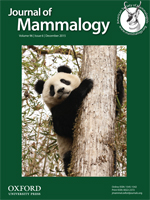For effective species management, understanding population structure and distribution is critical. However, quantifying population structure is not always straightforward. Within the Southern Hemisphere, the blue whale (Balaenoptera musculus) complex is extremely diverse but difficult to study. Using automated detector methods, we identified “acoustic populations” of whales producing region-specific call types. We examined blue whale call types in passive acoustic data at sites spanning over 7,370 km across the southeast Indian Ocean and southwest Pacific Ocean (SWPO) from 2009 to 2012. In the absence of genetic resolution, these acoustic populations offer unique information about the blue whale population complex. We found that the Australian continent acts as a geographic boundary, separating Australia and New Zealand blue whale acoustic populations at the junction of the Indian and Pacific Ocean basins. We located blue whales in previously undocumented locations, including the far SWPO, in the Tasman Sea off the east coast of Australia, and along the Lau Basin near Tonga. Our understanding of population dynamics across this broad scale has significant implications to recovery and conservation management for this endangered species, at a regional and global scale.
How to translate text using browser tools
1 December 2015
Calls Reveal Population Structure of Blue Whales Across the Southeast Indian Ocean and the Southwest Pacific Ocean
Naysa E. Balcazar,
Joy S. Tripovich,
Holger Klinck,
Sharon L. Nieukirk,
David K. Mellinger,
Robert P. Dziak,
Tracey L. Rogers
ACCESS THE FULL ARTICLE

Journal of Mammalogy
Vol. 96 • No. 6
December 2015
Vol. 96 • No. 6
December 2015
Australia
bioacoustics
Lau Basin
marine mammal
New Zealand
passive acoustic monitoring
pygmy blue whale




